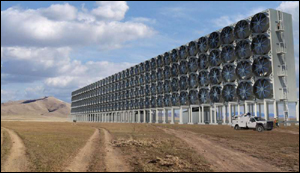A Process for Capturing CO2 from the Atmosphere
8. 6. 2018 | Cell Press | www.cell.com
Someday, the gasoline you buy might trace its heritage to carbon dioxide pulled straight out of the sky rather than from oil pumped out of the ground. By removing emitted carbon dioxide from the atmosphere and turning it into fresh fuels, engineers at a Canadian firm have demonstrated a scalable and cost-effective way to make deep cuts in the carbon footprint of transportation with minimal disruption to existing vehicles. Their work appears June 7 in the journal Joule.
"The carbon dioxide generated via direct air capture can be combined with sequestration for carbon removal, or it can enable the production of carbon-neutral hydrocarbons, which is a way to take low-cost carbon-free power sources like solar or wind and channel them into fuels that can be used to decarbonize the transportation sector," says lead author David Keith, founder and chief scientist of Carbon Engineering, a Canadian CO2-capture and clean fuels enterprise, and a professor of applied physics and public policy at Harvard University.

Direct air capture technology works almost exactly like it sounds. Giant fans draw ambient air into contact with an aqueous solution that picks out and traps carbon dioxide. Through heating and a handful of familiar chemical reactions, that same carbon dioxide is re-extracted and ready for further use—as a carbon source for making valuable chemicals like fuels, or for storage via a sequestration strategy of choice.
Read more at Cell Press
Image Credit: Carbon Engineering
-jk-




